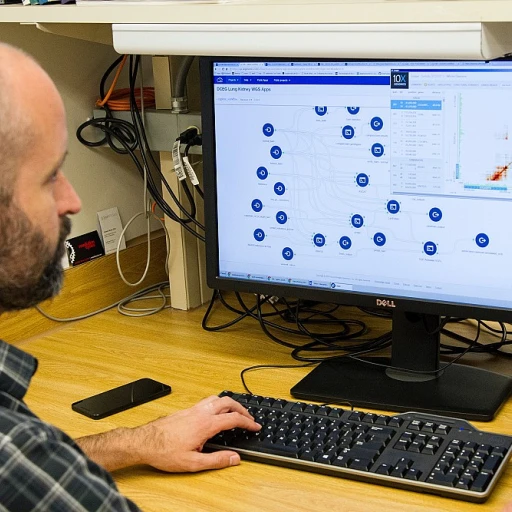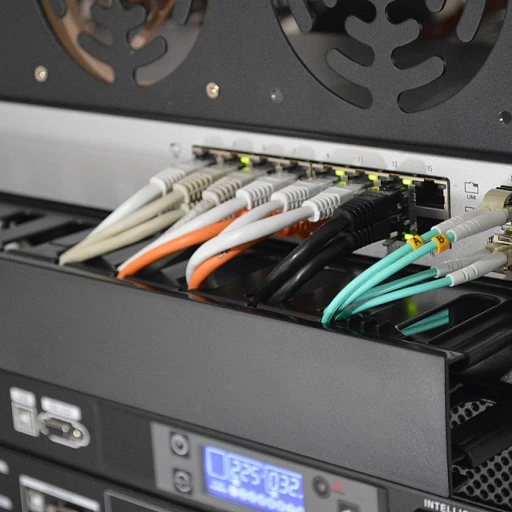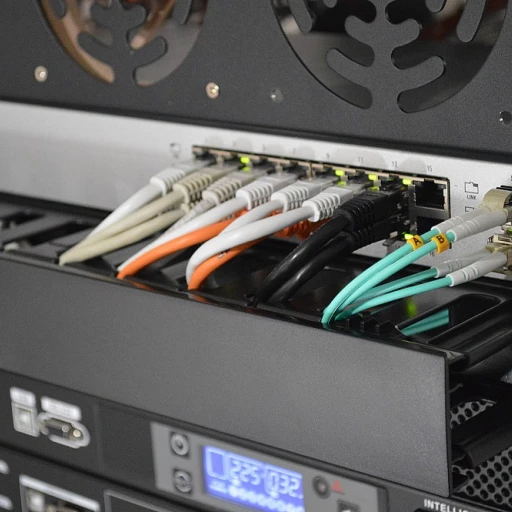
Understanding Plug-and-Play Battery Systems
Introduction to Plug-and-Play Battery Systems
Plug-and-play battery systems have revolutionized the way we think about powering devices, from consumer electronics to IoT applications. These systems are designed to simplify the integration of batteries into various devices, allowing for easy installation and replacement without the need for technical expertise. The concept is akin to the ease of setting up a starter kit where everything you need is readily available and easy to use.
How Plug-and-Play Works
The essence of plug-and-play lies in its simplicity and user-friendliness. Users can simply plug in the battery, and it’s ready to play. This is particularly beneficial for devices that require frequent battery changes, such as disposable vapes or other consumer electronics. The system automatically recognizes the battery type and adjusts the device settings accordingly, ensuring optimal performance and safety.
Key Features and Benefits
- Ease of Use: No technical skills are required to install or replace batteries, making it accessible to all users.
- Compatibility: These systems are designed to work with a wide range of devices, from low voltage gadgets to high-power applications.
- Flexibility: Users can switch between different battery types, such as mah battery or solar powered options, depending on their needs.
- Cost-Effectiveness: By reducing the need for specialized installation services, plug-and-play systems can lower the overall price of device maintenance.
Applications in Consumer Electronics and IoT
Plug-and-play battery systems are increasingly being adopted in various sectors, particularly in consumer electronics and IoT. Devices like vapes and other portable electronics benefit from the convenience and efficiency these systems offer. Moreover, as IoT devices become more prevalent, the demand for easy-to-use power solutions will only grow. To understand more about the role of an IoT developer in this evolving landscape, you can explore this resource.
The Role of Software in Battery Integration
The Software Backbone of Battery Integration
In the realm of plug-and-play battery systems, software plays a pivotal role in ensuring seamless integration and functionality. As these systems become more prevalent in consumer electronics and IoT devices, the demand for sophisticated software solutions is on the rise. The software acts as the brain of the operation, managing everything from battery charge levels to communication with other components.
One of the primary functions of software in these systems is to manage the charge controllers. These controllers are crucial for maintaining the health and efficiency of the battery, ensuring that it operates within safe parameters. By monitoring the battery's mah (milliampere-hour) capacity, the software can optimize the charging process, preventing issues like low voltage or overcharging, which can significantly affect the battery's lifespan.
Enhancing User Experience and Safety
Software also enhances the user experience by providing real-time data and alerts. For instance, users can receive messages about battery status, such as when it's time to charge or if there's a potential issue. This feature is particularly beneficial for devices like vapes and disposable vapes, where battery performance directly impacts the device's functionality.
Moreover, the integration of software in plug-and-play systems ensures that batteries can be easily swapped or replaced without technical expertise. This is especially important for starter kits and plugplay battery systems, where ease of use is a significant selling point. The software automatically recognizes the new battery and adjusts settings accordingly, providing a hassle-free experience for the user.
Driving Innovation and Connectivity
As we explore the future of interconnected IoT systems, the role of software in battery integration becomes even more critical. With the increasing demand for solar energy solutions and pre filled battery packs, software must evolve to handle more complex tasks. This includes managing energy distribution across multiple devices and ensuring that each component operates at peak efficiency.
In conclusion, the software is the unsung hero in the evolution of plug-and-play battery systems. Its ability to enhance functionality, improve safety, and drive innovation is indispensable as we move towards a more connected and energy-efficient future. For more insights on how software is shaping the future of interconnected systems, you can explore the potential of IoT software development.
Challenges in Developing Plug-and-Play Battery Software
Overcoming Software Integration Hurdles
Developing software for plug-and-play battery systems presents a unique set of challenges. As these systems become more prevalent in consumer electronics and IoT devices, the demand for seamless integration grows. The software must be robust enough to handle various battery types, from disposable vapes to solar-powered units, while ensuring compatibility with a wide range of devices.
Ensuring Compatibility Across Devices
One of the primary challenges is ensuring compatibility across different devices and battery types. For instance, a plugplay battery kit must work seamlessly with both low voltage and high-capacity devices. This requires sophisticated software that can adapt to different battery specifications, such as battery mah and charge controllers, to optimize performance and longevity.
Addressing Security Concerns
Security is another critical aspect. As more devices become interconnected, the risk of cyber threats increases. Software developers must prioritize security features to protect user data and device functionality. This involves implementing secure communication protocols and regular software updates to address vulnerabilities.
Balancing Cost and Performance
Price is always a consideration for consumers. The software must balance cost and performance, ensuring that even low-cost plugplay systems offer reliable functionality. This involves optimizing software to reduce resource consumption, which can help lower the unit price of devices without compromising on quality.
For more insights into the role of software in battery integration, explore our detailed analysis on unlocking the potential of IoT software development.
Innovations Driving the Future of Plug-and-Play Batteries
Innovative Trends Shaping Plug-and-Play Battery Systems
The landscape of plug-and-play battery systems is rapidly evolving, driven by a surge of innovations aimed at enhancing efficiency and user experience. These advancements are not only transforming how batteries are integrated into devices but also how they interact with the broader ecosystem of consumer electronics and IoT.
One of the most significant innovations is the development of smart battery management systems. These systems utilize advanced software algorithms to optimize battery performance, ensuring that devices maintain a low voltage threshold while maximizing battery lifespan. This is particularly crucial for devices like disposable vapes and other portable electronics where battery efficiency directly impacts user satisfaction.
Another trend is the integration of solar charge controllers in plug-and-play battery kits. This innovation allows for seamless charging of batteries using solar energy, reducing dependency on traditional power sources and promoting sustainability. The ability to charge batteries through solar power not only lowers the regular price of energy consumption but also aligns with the growing consumer demand for eco-friendly solutions.
Moreover, the rise of pre-filled battery kits and disposable vapes has led to a demand for batteries that offer high mAh capacity while maintaining a compact form factor. This has prompted manufacturers to innovate in battery design, focusing on delivering high-performance units at a competitive price sale. The regular price of these advanced batteries is becoming more accessible, making them an attractive option for both consumers and manufacturers.
Customer service and user feedback are also playing a pivotal role in driving innovation. Companies are increasingly relying on reviews and messages from users to refine their products. This feedback loop helps in addressing common issues such as low voltage alerts and improving the overall user experience. The interaction between manufacturers and users, often facilitated through online platforms, ensures that the development of plug-and-play batteries is aligned with consumer needs.
As these innovations continue to unfold, the future of plug-and-play battery systems looks promising. With ongoing advancements in technology and a focus on sustainability, these systems are set to revolutionize the way we power our devices, offering a seamless and efficient energy solution for the modern world.
Impact on Consumer Electronics and IoT
Transforming Consumer Electronics and IoT
The integration of plug-and-play battery systems is set to revolutionize consumer electronics and the Internet of Things (IoT). These systems offer a seamless experience, allowing devices to function with minimal user intervention. The convenience of simply plugging in a battery and having it work immediately is a game-changer for many products, from vapes to smart home devices.
One of the key benefits is the ability to maintain a low voltage operation, which is crucial for disposable vapes and other small electronics. This ensures that devices can operate efficiently without the need for frequent charge cycles, enhancing the user experience and extending the lifespan of the product.
Consumer Demand and Market Dynamics
As consumer demand for more efficient and user-friendly devices grows, the market for plug-and-play battery systems is expanding. The price of these systems is becoming more competitive, with regular price reductions and sale price promotions making them accessible to a broader audience. This trend is evident in the increasing number of starter kits and battery kits available, catering to both regular and disposable products.
Moreover, the integration of solar technology and charge controllers into these systems is paving the way for more sustainable solutions. Consumers are increasingly looking for products that not only meet their needs but also align with their environmental values.
Enhancing Connectivity and User Experience
The role of plug-and-play batteries in enhancing connectivity cannot be overstated. With the rise of interconnected devices, the ability to quickly and easily swap out batteries without disrupting service is invaluable. This is particularly important in the IoT space, where devices often need to communicate seamlessly with one another.
Customer feedback and reviews highlight the importance of reliable customer service and the ability to easily find replacement batteries. Companies that prioritize these aspects are likely to see increased member joined rates and positive replies views from satisfied customers.
In conclusion, the future of plug-and-play battery systems in consumer electronics and IoT is bright. As technology continues to evolve, these systems will play a crucial role in shaping the way we interact with our devices, offering convenience, efficiency, and sustainability.
The Future Landscape of Plug-and-Play Technology
Emerging Trends and Opportunities
The future landscape of plug-and-play technology is set to transform various industries, driven by advancements in battery systems and software integration. As the demand for seamless user experiences grows, plug-and-play solutions are becoming increasingly vital. These systems are not only simplifying the way devices like vapes and consumer electronics operate but are also paving the way for more sophisticated IoT applications.
Integration with Renewable Energy
One of the most promising areas is the integration of plug-and-play battery systems with renewable energy sources. Solar charge controllers are becoming more efficient, allowing for better energy management in devices. This integration is crucial for reducing the environmental impact of disposable vapes and other electronics, which often rely on disposable batteries.
Consumer Electronics and IoT
In the realm of consumer electronics, the ability to quickly swap out a play battery or a plugplay battery without technical expertise is a game-changer. This ease of use is particularly appealing in the starter kits for new users, enhancing customer satisfaction and reducing the need for extensive customer service interactions. Moreover, as IoT devices become more prevalent, the demand for reliable and efficient power sources will only increase.
Market Dynamics and Pricing
The market for plug-and-play technology is also influenced by pricing strategies. With the regular price of batteries fluctuating, companies are exploring ways to offer competitive sale prices without compromising on quality. This is particularly important in the low voltage segment, where cost-effectiveness is a key consideration for consumers.
Future Prospects
Looking ahead, the evolution of plug-and-play systems will likely focus on enhancing battery mah capacities and improving the efficiency of pre-filled and disposable units. As technology advances, we can expect to see more innovative solutions that cater to the needs of both regular and new users, making these systems an integral part of our daily lives.















